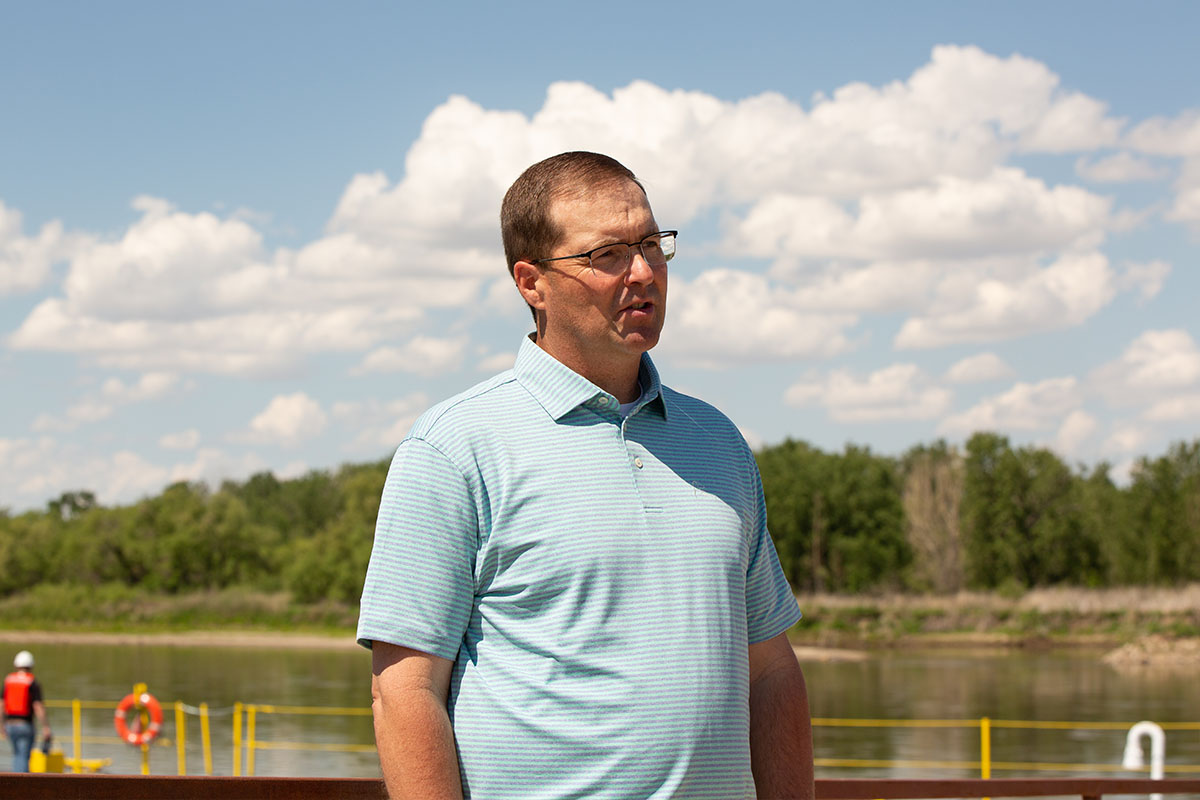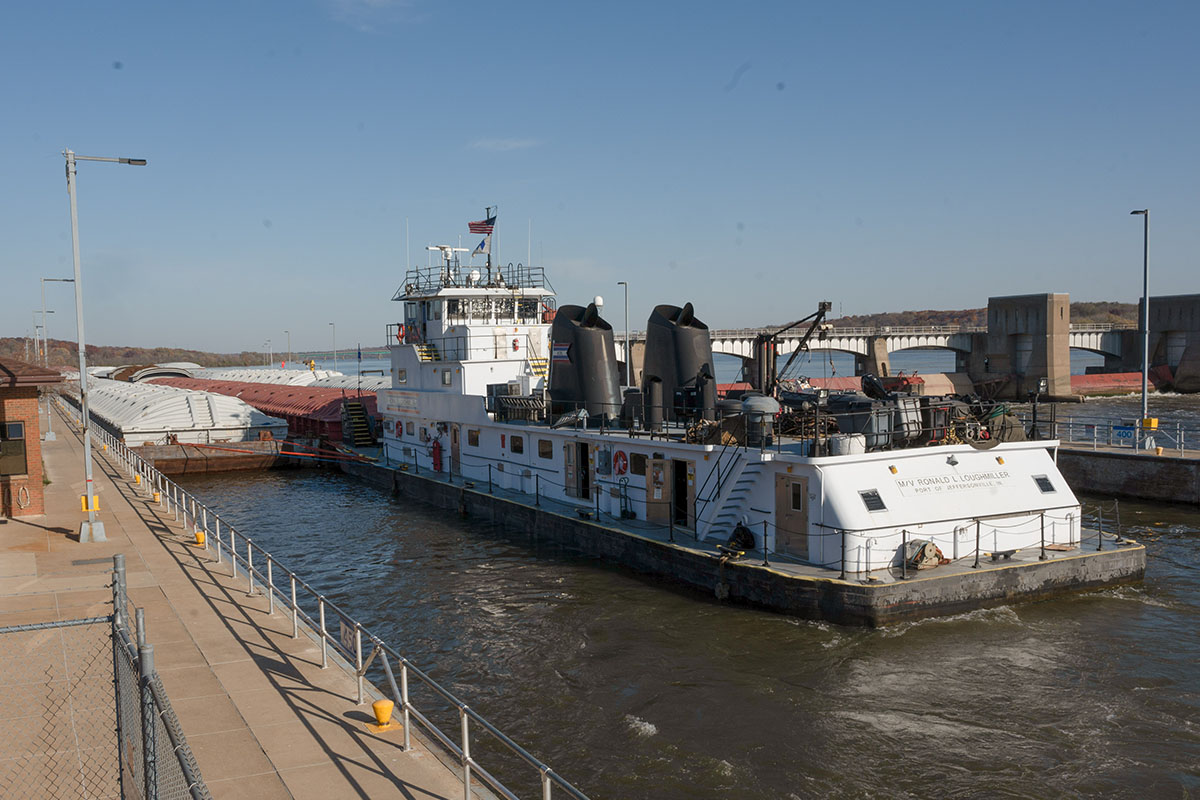
Jeff Jorgenson realizes the importance of our river systems, especially in times of higher input prices. (Photo: Iowa Soybean Association)
Rivers: Not Just for Exports
November 2, 2021 | Kriss Nelson
As the price of input soars and their availability dwindles, transporting them in an economical and timely fashion is more important than ever.
One of the most efficient, yet often overlooked, modes of getting inputs to Iowa farmers is the river system.
“As farmers, we don’t realize the significance of what it means to bring those products back up the river,” says Jeff Jorgenson, immediate ISA past president and farmer near Sidney.
Buying inputs for the 2022 season highlights the river’s significance, Jorgenson says.
“The time it really matters is right now,” he says. “The prices of our inputs are skyrocketing, and part of that is coming from the shipping costs.”
Mike Steenhoek, executive director of the Soy Transportation Coalition(STC), says transportation plays a large role on input costs, including fertilizer.
An underappreciated part of the agriculture story, he says is how consequential the river is as a mode of transportation.
"Rivers are a contributing part of our competitiveness – not just on the outbound, where we are ultimately exporting to other countries, but also on the inbound,” says Steenhoek.
The STC was established in 2007 to promote a cost-effective, reliable and competitive transportation system that serves the agriculture industry.
It’s comprised of the United Soybean Board, the American Soybean Association and 13 state soybean boards, including the Iowa Soybean Association.
“Many times, checkoff investment in the STC has been a leverage tool to get funding for projects that are very beneficial to our soybean industry and in turn, to Iowa farmers,” says Jorgenson.

Keeping the rivers flowing
Promoting the inland waterway system has been a consistent emphasis for the STC, with priorities placed on funding locks and dams and exploring ways to efficiently transport soybeans.
Though $17 billion was earmarked in a Senate bill to ports and waterways in an infrastructure package, infrastructure and maintenance needs outstrip current funding, specifically on the upper Mississippi River. (When this issue of the Iowa Soybean Review went to press, the $17 billion was still up for debate.)
“So many of those locks, while they have been maintained, were built and opened in 1939,” Steenhoek says.
Maintenance of the locks and dams can go a long way in preserving the river’s usefulness. Still, additional resources are necessary to maintain and expand locks to accommodate longer barge-tows or flotillas without having to break them up into segments, he says.
The U.S. Army Corps of Engineers has diligently maintained the river despite Iowa experiencing a drought.
“There are occasions where you have high water levels and occasions with low water levels,” Steenhoek says. “Overall, the river has performed quite well this year despite inadequate rainfall.”
Routine maintenance dredging has helped keep the rivers operational, Steenhoek says.
“The U.S. Army Corps of Engineers has done an exceptional job this year of maintenance dredging on the river system,” Steenhoek says.
The net result of this work has been the continuity of both upbound and outbound barge traffic. At least until recently.
Over the past few months, a very prominent development has been the effects of Hurricane Ida in the Gulf of Mexico.
“There has been a suspension of service going in and out of the lower Mississippi near New Orleans,” says Steenhoek. “We are emerging from that, but there are some issues we are going to be confronted with for some time.”
This not only causes problems for U.S. exports but also brings concerns about future fertilizer availability.
“In addition to trade barriers imposed from countries that export fertilizer to the United States, there is the issue with the lower Mississippi River where there is less fluidity and throughput capacity,” says Steenhoek. “The problem of securing sufficient fertilizer becomes even more pronounced.”
Available fertilizer supplies, coupled with higher commodity prices, are a driving force of higher input costs, which are up nearly 50% over last year, according to the University of Illinois.
“I have probably spent more money on 2022 inputs at this point than I ever have in my career,” says Jorgenson. “Part of it is availability. Part of it was better price. You add all the factors up, and I think it’s not often enough we realize, as farmers, the importance of that movement northward of the fertilizers we use.”
Back